I have an issue in joining multiple table. When I add another join to my correct query quantity gets messed up. I joined the status table because I want to get the status from there. (Using SSMS)
This is the correct code and the actual correct quantity:
SELECT
TIT.PART_ID,
TIT.TRACE_ID,
IT.WAREHOUSE_ID,
IT.LOCATION_ID,
P.PRIMARY_WHS_ID,
P.PRIMARY_LOC_ID,
P.BACKFLUSH_WHS_ID,
P.BACKFLUSH_LOC_ID,
P.AUTO_BACKFLUSH,
SUM(TIT.QTY) AS QTY
FROM
TRACE_INV_TRANS TIT --TIT = TRACE INV TRANS TABLE
INNER JOIN INVENTORY_TRANS IT ON TIT.PART_ID = IT.PART_ID AND TIT.TRANSACTION_ID = IT.TRANSACTION_ID
LEFT JOIN PART_SITE P ON P.PART_ID = TIT.PART_ID
WHERE
IT.LOCATION_ID = 'DISPATCH'
AND TIT.QTY IS NOT NULL
GROUP BY
TIT.TRACE_ID,
TIT.PART_ID,
IT.WAREHOUSE_ID,
IT.LOCATION_ID,
P.PRIMARY_WHS_ID,
P.PRIMARY_LOC_ID,
P.BACKFLUSH_WHS_ID,
P.BACKFLUSH_LOC_ID,
P.AUTO_BACKFLUSH
HAVING
SUM(TIT.QTY) > 0
Correct code executed with correct quantity showing

Now when I try to join another table, I still want to get the same quantity shown above.
Here's what I tried but the quantity seems to have been multiplied by 9 or something. It could also be that my joins are wrong or I have a silly mistake.
Here's the new code (Joining the Part_Location table) but my quantity is incorrect (QTY should be the same as shown in image 1)
SELECT
TIT.PART_ID,
TIT.TRACE_ID,
IT.WAREHOUSE_ID,
IT.LOCATION_ID,
L.STATUS,
P.PRIMARY_WHS_ID,
P.PRIMARY_LOC_ID,
P.BACKFLUSH_WHS_ID,
P.BACKFLUSH_LOC_ID,
P.AUTO_BACKFLUSH,
SUM(TIT.QTY) AS QTY
FROM
TRACE_INV_TRANS TIT --TIT = TRACE INV TRANS TABLE
INNER JOIN INVENTORY_TRANS IT ON TIT.PART_ID = IT.PART_ID AND TIT.TRANSACTION_ID = IT.TRANSACTION_ID
LEFT JOIN PART_SITE P ON P.PART_ID = TIT.PART_ID
INNER JOIN PART_LOCATION L ON L.PART_ID = TIT.PART_ID
WHERE
IT.LOCATION_ID = 'DISPATCH'
AND TIT.QTY IS NOT NULL
AND L.STATUS = 'A'
GROUP BY
TIT.TRACE_ID,
TIT.PART_ID,
IT.WAREHOUSE_ID,
IT.LOCATION_ID,
P.PRIMARY_WHS_ID,
P.PRIMARY_LOC_ID,
P.BACKFLUSH_WHS_ID,
P.BACKFLUSH_LOC_ID,
P.AUTO_BACKFLUSH,
L.STATUS
HAVING
SUM(TIT.QTY) > 0
Alteration made where lines 6, 17, 21, and 32 where added but now QTY is incorrect
